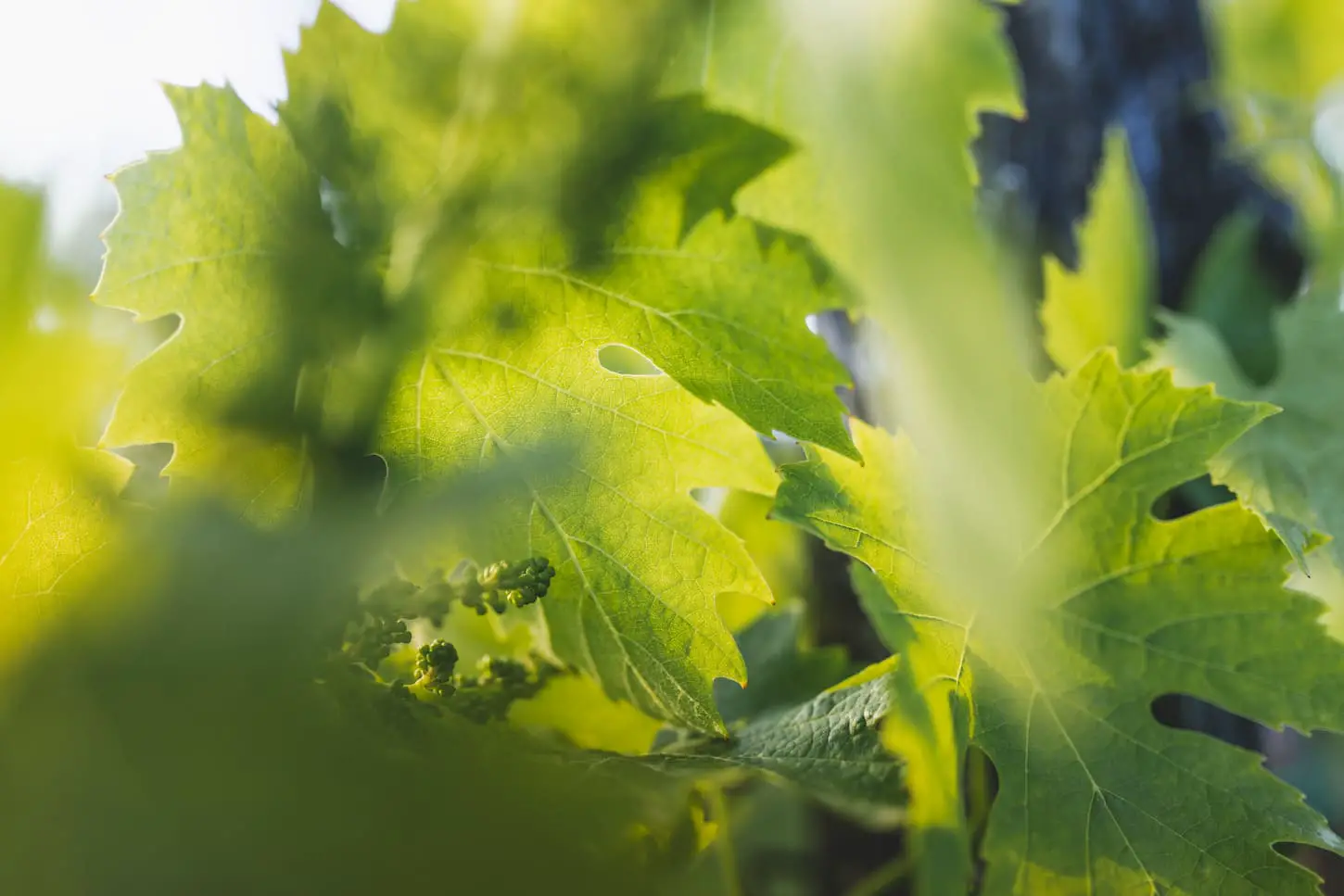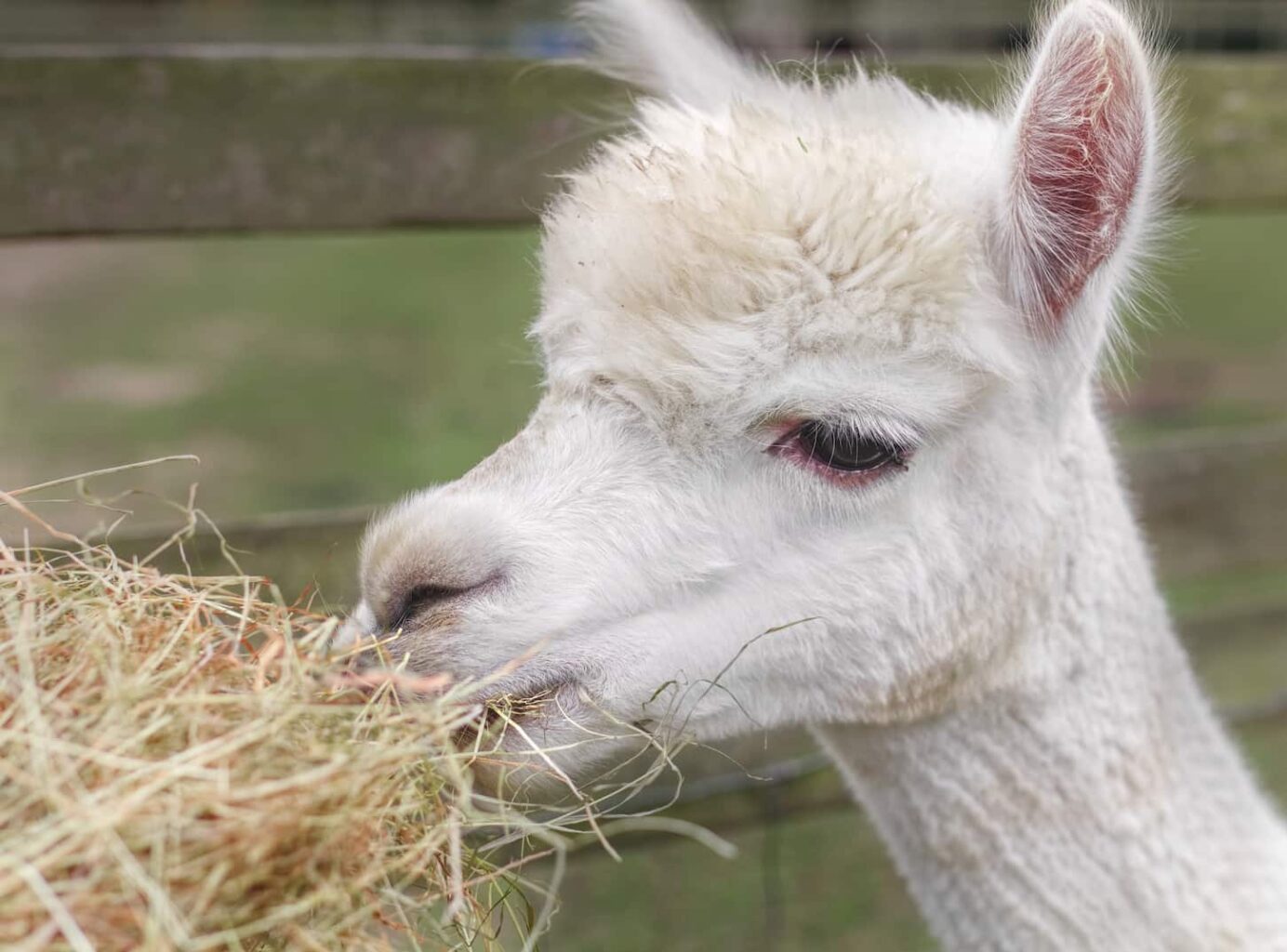Alpacas and llamas are becoming increasingly popular across the US. This is not just as livestock, where alpacas, in particular, are kept for their super soft wool, but also as pets! If you want to join the ever-increasing numbers of alpaca and llama owners, there’s quite a bit you need to know about what they can eat and how to feed them.
One thing that homestead owners are increasingly aware of is the invasive plant species known as kudzu. Kudzu is a fast-growing plant from Japan that’s taking over green spaces everywhere, growing over other existing plants to steal their sunlight!
I interviewed multiple veterinarians, who agreed that alpacas and llamas could probably eat kudzu safely, as they share a similar digestive system to goats (goats eat kudzu). Veterinarians said camelids who eat any new food (kudzu included) should be monitored carefully.
If you end up with this in your pastures, you’ll need to know what this means for your precious camelid friends! Read on to find out all about what kudzu is, whether these animals like it, whether it’s poisonous for them, and whether keeping alpacas and llamas is a good way to control the growth of kudzu.

Alpacas and Llamas Can Eat Kudzu
Alpacas and llamas can, in theory, safely eat kudzu. There’s not a whole lot of data about alpacas and llamas specifically eating kudzu. However, other ruminants such as sheep, goats, and cows can graze on kudzu, and its high protein content of 20-30% makes it suitable forage.
One study, in which researchers examined whether kudzu was a viable supplement to sheep diets, came to the conclusion that it’s actually a great choice. It’s cheap and provides plenty of the protein needed in an animal’s diet. It’s also ecologically friendly, as you’ll be reducing the amount of kudzu left to grow over native plant species!
It might be a stretch to say that alpacas and llamas actually like kudzu, though. The veterinarians that I asked while researching this article hadn’t really heard of these animals eating it, so they would probably just stick to their normal forages if they had a choice.
If you want to feed your animal’s kudzu, it would probably be best to just add it as a supplement to their feed. It’s a great cheap source of protein, and this way you’ll have your herd happily chowing down on it!
I personally called multiple veterinarians in the Southeastern United States to talk about alpacas and llamas eating kudzu, and if it’s safe. None of them had ever heard of it being a problem.
Then again, none of them had ever heard of camelids eating kudzu. However, we talked about how goats and camelids have similar digestive systems, and we theorized in conjunction with known studies that it’s probably pretty safe.
That being said, if you do let your camelids eat kudzu, be sure to watch them for any digestive issues. Call your veterinarian right away if you notice any distress. And then let me know so I can update this article!
Do Alpacas and Llamas Like to Eat Kudzu?
Kudzu is an appropriate forage plant for alpacas and llamas to eat, though individual animals may (or may not) develop a taste for it.
I’ve talked to various camelid owners in the Southeastern United States who say that their animals do well foraging on plants. Not all of them have taken note of whether or not their animals are munching down on kudzu, though.
So if you’re noticing that your alpacas or llamas are loving to eat kudzu, let me know. I’d love to give anecdotal evidence to either back up or refute the theoretical answer the veterinarians and I came up with!

Is Kudzu Poisonous for Alpacas and Llamas?
Kudzu isn’t thought to be poisonous to alpacas and llamas. However, while the veterinarians I asked didn’t recall cases of kudzu poisoning, they also didn’t know of many of these animals actively eating it. If you suspect your herd is poisoned, contact your veterinarian immediately.
Research into the effects of kudzu on other livestock animals has shown that it’s generally safe. Although llamas and alpacas are camelids and have a slightly different digestive system to other ruminants, their digestion is similar enough that this plant should be safe for them.
If you’d like to know more about camelid digestive systems, make sure you check out my article on it here: “Are Alpacas and Llamas Ruminants?”
Can Alpacas and Llamas Be Used to Control Kudzu?
In theory, alpacas and llamas could be used to control kudzu, although there’s no guarantee that they’ll choose to eat it if there’s other food available.
If you keep these animals but also want to control kudzu, a good option might be to chop down the kudzu yourself and feed it to your animals. This way, you’ll save money compared to commercial feeds, and remove the fast-growing invasive plant from your property!
If your alpacas and llamas aren’t interested in helping you control the kudzu on your homestead, you can tap into other livestock options in helping you control the crazy growth of this vine.
What Other Animals Can Be Used to Control Kudzu?
Sheep, pigs, goats, cows, and chickens can all be used to control kudzu naturally. Here are articles I’ve written in this series – just in case you wanted to know more about which animals can (and like) eat kudzu.
Goats are traditionally the most popular kudzu-eating animal. So maybe your goats can give your alpacas and llamas a run for the kudzu-eating contest.
Interesting Kudzu Facts
Kudzu is a vine-like plant that originated in Japan. It is also known as Japanese arrowroot. Introduced to the US in the late nineteenth century, it is an invasive species, and its fast growth often smothers and kills native plants.
Although it’s now considered something of a weed, kudzu was actually deliberately introduced to the US at the 1876 Centennial Exposition in Philadelphia. Later, during the beginning of the twentieth century, it was marketed as a great way for farmers to maintain healthy topsoil.
At first, kudzu enhances the soil quality by nurturing nitrogen-producing bacteria in the soil. However, the plant grows so quickly that it soon overgrows existing plants. There’s no real consensus about how fast it grows; estimates range from about 2,500 acres per year on the conservative side to a whopping 150,000 on the higher side!
Kudzu is now common in the US, especially in areas that haven’t been well maintained. The plant poses a risk to native plants, as it competes with them for sunlight.

Is kudzu a problem?
Kudzu is an invasive species. It outgrows native plants, denying them access to sunlight and killing them off. For this reason, kudzu can be a big problem if left to grow by itself.
If you have kudzu on your homestead, then you’ll probably want to get rid of it pretty quickly before it takes everything over. Kudzu can be a good dietary supplement for livestock, so you may be able to use your alpacas and llamas to help you control it!
Final thoughts on Camelids Eating Kudzu
This whole kudzu series started when a reader asked me if it was safe for alpacas and llamas to eat kudzu. It’s been a wild journey of research, calling a ridiculous number of veterinarians, and study. But it’s also been a lot of fun – and a cool reminder of when I lived in South Carolina.
And while I probably won’t ever have to worry about kudzu taking over my homestead in Utah, it’s good to know that I’ve got livestock options to control it if it somehow adapts to the dry Utah deserts.
In any case, if you’ve got a question you’d like answered (either here on the website or on my YouTube channel), then I’d love to hear it. You can reach me via my contact me page or by leaving a comment on any of my YouTube videos. Feel free to subscribe while you’re there.
Or, if you’d rather keep reading about the awesome camelids known as alpacas and llamas, then be sure to check out this article next: Alpacas, Llamas, And Predators: The Complete Guide. In that article, I’ll share some cool tips, tricks, and information on keeping your beloved animals safer from becoming a predator’s snack. Go give that a read next, and happy homesteading!
Resources
Learning from your own experience is essential, but learning from others is also intelligent. These are the sources used in this article and our research to be more informed as homesteaders.
- “Kudzu in Alabama.” ACES Publications, 1999, www.aces.edu/pubs/docs/A/ANR-0065
- Paz, Camila Carvalho Da, et al. “Tropical Kudzu as a Protein Source in Sheep Diets.” Semina: Ciências Agrárias, vol. 37, no. 2, 2016, p. 933. Crossref, doi:10.5433/1679-0359.2016v37n2p933
- Starr, Kimberly. “Are Alpacas and Llamas Ruminants?” Backyard Homestead HQ, 30 June 2021, backyardhomesteadhq.com/are-alpacas-and-llamas-ruminants
- Stigall, Alycia L. “The Invasion Hierarchy: Ecological and Evolutionary Consequences of Invasions in the Fossil Record.” Annual Review of Ecology, Evolution, and Systematics, vol. 50, no. 1, 2019, pp. 355–80. Crossref, doi:10.1146/annurev-ecolsys-110617-062638
- Zettler, Francis William. “The Biohistory of Florida.” Google Books, 2015, books.google.nl/books?hl=en&lr=&id=J5ZxDwAAQBAJ&oi=fnd&pg=PT8&dq=camelids+eat+kudzu&ots=eDAdLDzdD2&sig=72tQpABqJetekdnErbVkdBAbQyw&redir_esc=y#v=onepage&q&f=false
- A huge thank-you to all of the veterinarians who took the time to talk with me and allow me to pick their brains for this article.